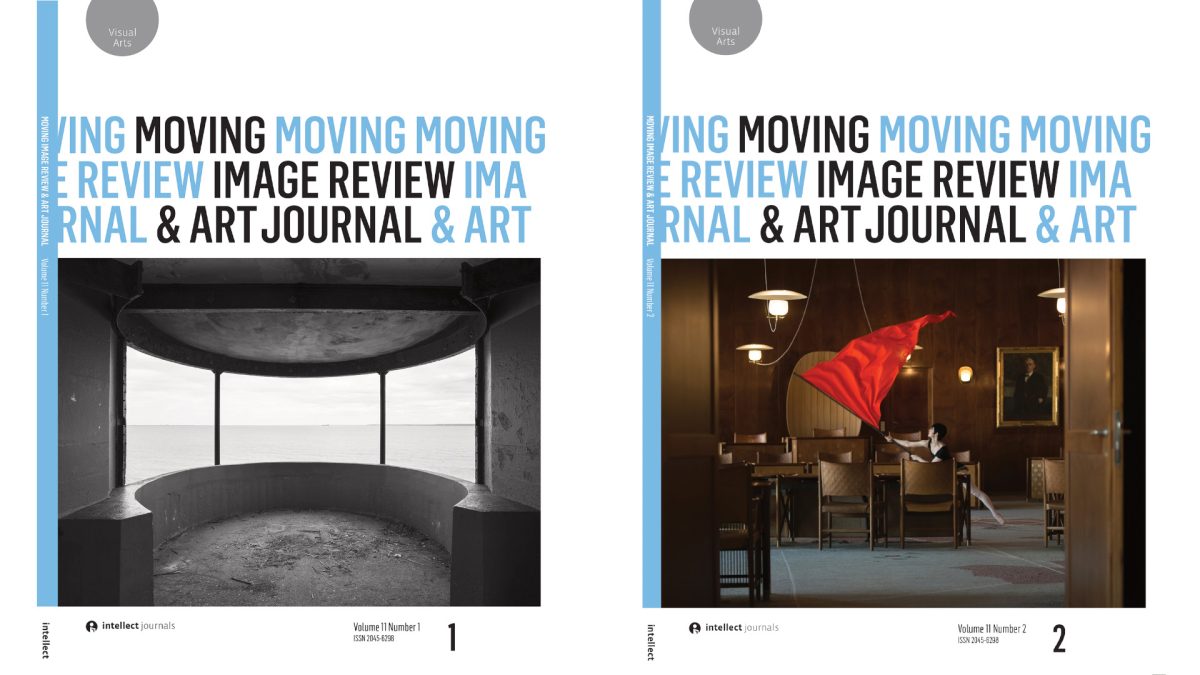MOVING IMAGE REVIEW AND ART JOURNAL (MIRAJ)
Moving Image Review and Art Journal (MIRAJ) is the only peer reviewed academic journal devoted to the study of the moving image as a cultural form. MIRAJ offers a widely distributed international forum for debates surrounding all aspects of artists’ moving image and media artworks.
Part of the publisher Intellect’s stable of art and design journals, MIRAJ was founded by Professor Catherine Elwes in 2011, who remained its editor in chief until 2017. Under her editorship, the journal has grown to be one of the most respected academic sources for writing in the field, encompassing the scholarship of the eminent and established alongside fresh insights by emerging scholars. The journal continues at CREAM under the co-editorship of Michael Mazière, Lucy Reynolds, with Rachel Garfield of the School of Arts and Humanities, Royal College of Art, as Scholarly Editor, and Clare Carolin of Kings College as Reviews Editor.
MIRAJ is published twice a year in print and as an e-journal. Contributions to the journal are encouraged by open submission and a call for papers, in response to a theme or reflecting the writer’s particular area of study. MIRAJ publishes the following types of writing: scholarly articles (5000–8000 words); opinion pieces, feature articles and interviews (3000-4000 words); review essays of books, individual works, exhibitions and events (3000-4000 words). Scholarly articles will be blind peer-reviewed and feature articles and review essays can be peer-reviewed on request. All writings should propose a central idea or thesis argued through a discussion of the work under review.
LATEST ISSUE
MIRAJ Volume 11 Issue 1 and 2

MIRAJ Volume 11 Issue 1 considers a range of experiments in film and moving image whose components have been brought into relation with other art forms. The close alignment that these moving image artists have with still photography, painting, or sculpture, offer productive ways of thinking about film representation, providing the means of dismantling – or perhaps repurposing – the homogenising technologies of cinematic representation and its apparatus. Issue 2 brings together writing and conversations on contemporary and historic artists who find timely resonances both of a political and ecological nature in archival re-readings and retrievals.
Find out more here.
CALL FOR PAPERS
Moving Image Review and Art Journal is currently accepting contributions for inclusion in Issue 13.2 (launching December 2024). The Editorial team is currently interested in receiving scholarly articles (5000–8000 words) and opinion pieces, feature articles and interviews (3000–4000 words) from art historians and critics, film and media scholars, curators and, not least, practitioners.
To be considered for inclusion, completed scholarly articles and proposals for opinion pieces, feature articles and interviews should be submitted by September 1st 2024. Send all articles and proposals by e-mail in DOC or RTF format to the editorial assistants: miraj@cream.ac.uk
The editors seek pieces that offer theories of the present moment in the field of artist’s moving image but also writings that propose historical re-readings.
We welcome articles that:
- re-view canonical works and texts, or identify ruptures in the standard histories of artists’ film and video;
- discuss the development of media arts, including the history of imaging technologies, as a strand within the history of art;
- address issues of the ontology and medium-specificity of film, video and new media, or the entanglement of the moving image in a ‘post-medium condition’;
- attempt to account for the rise of projected and screen-based images in contemporary art, and the social, technological or political-economic effects of this proliferation;
- investigate interconnections between moving images and still images; the role of sound; the televisual; and the interaction of the moving image with other elements including technology, human presence and the installation environment;
- analyse para-cinematic or extra-cinematic works to discover what these tell us about cinematic properties such as temporal progression or spectatorial immersion or mimetic representation;
- explore issues of subjectivity and spectatorship;
- investigate the spread of moving images beyond the classical spaces of the cinema and galleries, across multiple institutions, sites and delivery platforms;
- consider the diverse uses of the moving image in art: from political activism to pure sensory and aesthetic pleasure, from reportage to documentary testimony, from performativity to social networking;
- suggest new methods of theorizing and writing the moving image.
All articles submitted should be original work and must not be under consideration by other publications.
We welcome work that intersects with other academic disciplines and artistic practices. We encourage writing that is lucid without compromising intellectual rigour.
Scholarly articles will be blind peer-reviewed and feature articles and review essays can be peer-reviewed on request. All writings should propose a central idea or thesis argued through a discussion of the work under review.
Referencing should be in Harvard style and all text should adhere to the Intellect Style Guide.
The following guidance is by no means comprehensive and must be read in conjunction with the Intellect Style Guide.
BACK ISSUES
MIRAJ back issues are available at intellectbooks.co.uk
CONTACT MIRAJ
Follow us on Facebook or Twitter.
E-mail: miraj@cream.ac.uk